The Fujifilm X100V and X100VI: names that have emerged in mainstream media and exploded in popularity through TikTok and Instagram. They’re cameras revered for their inviting form factor, durable and refined design, user-friendliness, and ability to customize film recipes for that nostalgic film photo look.
However, the popularity of these cameras has led to frustrating supply shortages and steep price hikes. While the latest X100VI may be the camera to get, there are incredibly worthy alternatives out there. These aren’t mere substitutes, they’re contenders in their own right — each with something special to offer. Let’s dive into the world of Fujifilm X100V and X100VI alternatives tailored to your specific photo needs.
Do you currently have a camera and are you just looking to recreate the Fujifilm X100V or X100VI’s film recipes? Check out our round-up of Fujifilm X100 Lightroom presets to apply the look to any of your photos!
Want more presets and tips? Check out our several Lightroom preset packs and more preset guides!
All-in-One Fujifilm X100 Lightroom Preset Pack
Emulate the iconic look of the Fujifilm X100V without the hefty price tag! Introducing the Ultimate Fujifilm X100 Lightroom Preset Pack for desktop and mobile. With the scarcity and high costs of the X100V and now X100VI, these 10 meticulously designed presets offer the perfect versatile and budget-friendly alternative. Capture the sharp, sophisticated, film-like quality of the X100V’s film recipes using any mobile or digital camera.
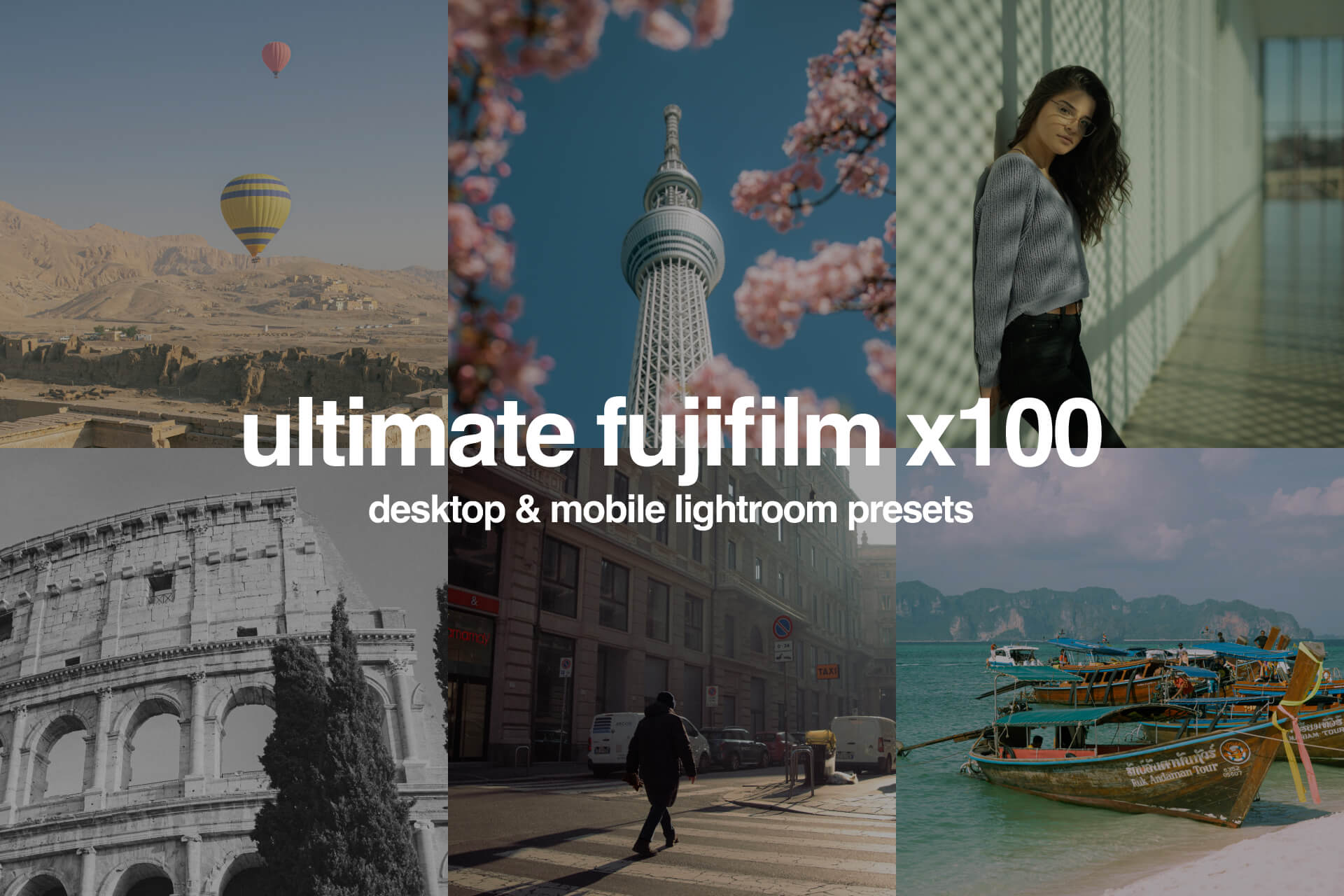
Ricoh GRIII X
Kicking off the list is the Ricoh GRIII X. The camera is built to achieve the same functions as the Fujifilm, but it’s lacking in the film recipe realm. A workaround for this can be its wifi transfer and editing capability with editing apps on your phone or tablet, like Lightroom or VSCO. Beyond that, the camera’s got a great 24MP APS-C sensor paired with a fixed 26.1mm f/2.8 lens which works around to 40mm on the cropped sensor. Similarly to the X100 cameras, it’s also got a built-in ND filter! The greatest advantage of the Ricoh is its small build and pocketability. You can truly take it anywhere and use it for casual capture — you can even shoot it with one hand with its portable build!
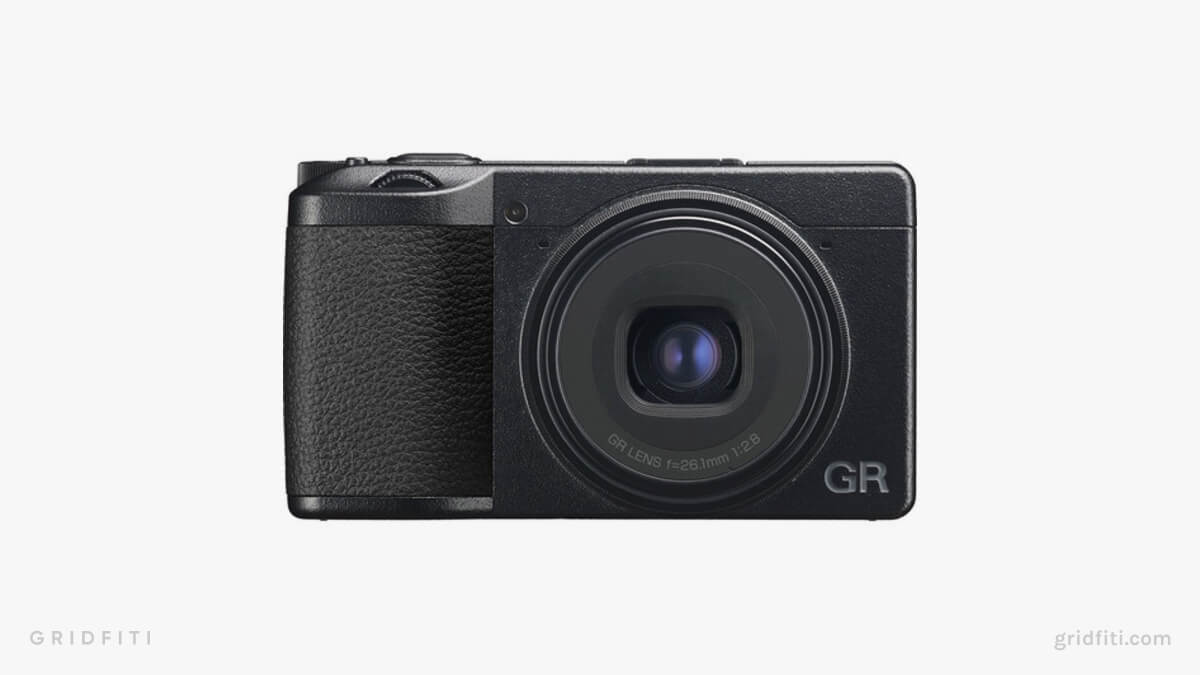
Nikon Zfc
Another standout in the realm of retro-style cameras is the Nikon Zfc. This camera blends a vintage design with cutting-edge internals. It’s equipped with a 20MP APS-C crop sensor, delivering strikingly sharp and vibrant photos, along with some serious 4K video capabilities. The Zfc is also versatile due to it not being fixed to a lens, giving access to Nikon’s Z-mount lens range. Keep in mind, when using APS-C specific lenses, some may not offer aperture control. The camera’s wifi transferability seamlessly integrates with mobile editing apps, even supporting RAW files!

Canon PowerShot G7 X Mark III
The Canon PowerShot G7 X Mark III is a powerhouse in a portable frame. Featuring a 20.1MP 1” CMOS sensor, and a versatile 24-100mm f/1.8-2.8 lens, this camera is ideal for casual photographers who might vlog on the side. The 3” touch panel screen, with its tilting adds flexibility to your shooting whether they’re high angle shots or selfies. Let’s not forget the built-in pop-up flash that creates well balanced portraits in low-light. Throw a Fujifilm preset on there and you’ve got yourself a Fujifilm disposable-looking flash photo! This camera and all its bells and whistles make it a worthy pick for creators on the go.
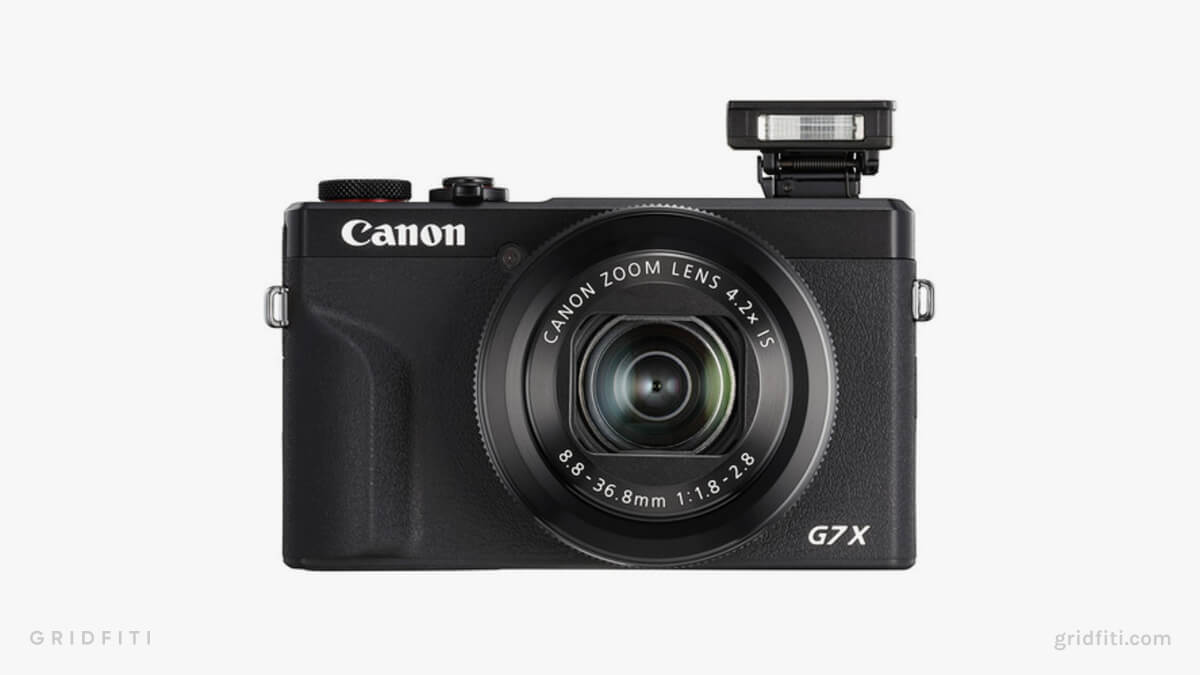
Sony Alpha a6400
The Sony Alpha a6400 is the perfect combo of compact design and powerful features. Equipped with a 24MP APS-C sensor, this camera brings exceptional image quality. The rapid and precise autofocus system ensures that you never miss a moment, while the 11fps continuous drive makes it ideal for dynamic movement shots. The large, sharp electronic viewfinder gives a clear view of subjects, and the LCD screen flips for quick selfies and vlogging. It’s a marvel of video capabilities paired with top notch photography elements.
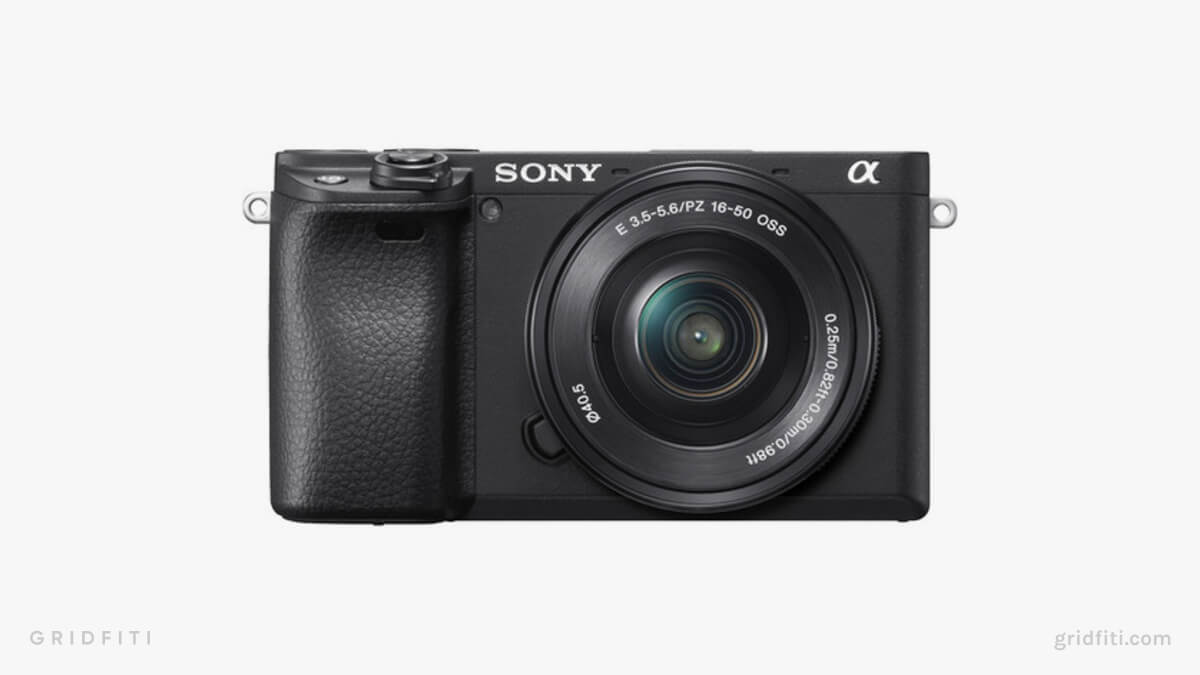
Canon M6 Mark II
The Canon M6 Mark II is a strong contender as an alternative to the Fujifilm X100V and X100VI. With a 32.5 megapixel APS-C sensor, it offers impressive image quality and high-speed continuous shooting at 14 fps. The 3-inch touch LCD screen tilts for easy selfies, making it versatile for photos and vlogging too! Pair it with the Canon EF-M mount 22mm f/2.8 lens, which closely mimics the Fujifilm X100VI’s 23mm f/2 lens, providing a similar field of view. The mobile RAW workflows with WiFi and Bluetooth transfer also make this camera convenient for on-the-go editing and sharing!

Olympus E-M10 Mark II
The Olympus E-M10 Mark II is a discontinued, yet great, simple alternative for the Fujifilm X100 cameras! Featuring a 16 megapixel CMOS sensor and SLR-style design, this camera is built primarily for photography, making it a great choice for still shooters. It comes equipped with a 3-inch OLED tilting screen. When paired with the Olympus M.ZUIKO Digital 17mm f/2.8 lens, you get a focal length similar to the Fujifilm X100 cameras, offering a similar shooting experience. While its video features might not be as advanced, this camera is a worthy option for those focused on high quality, on-the-go photos.
Get the Olympus E-M10 Mark II on eBay

Canon EOS RP
The Canon EOS RP is Canon’s lightest and smallest full-frame camera, making it a higher-end alternative to the Fujifilm X100V and X100VI. With its 26.2 megapixel sensor, this camera delivers beautiful image quality. Although it’s on the higher end of the price spectrum, its compatibility with Canon’s elite RF lenses offers unmatched versatility. The dual-pixel CMOS AF ensures fast and accurate autofocus, perfect for capturing those slice of life moments. Pair it with a Canon RF 28mm f/2.8 lens to closely match the Fujifilm X100 focal lengths, creating a similar shooting experience with the benefits of the full-frame sensor.

Fujifilm X-S20
The Fujifilm X-S20 keeps it within the Fujifilm family as a worthy, high-performing alternative to the X100 cameras. Offering a 26.1 megapixel X-Trans CMOS 4 sensor, the setup and unique filter array effectively controls and captures true-to-life colors. This camera boasts high-performing subject-detecting autofocus, making it reliable for capturing sharp images in dynamic settings. A standout feature is its capability to use the same beloved film simulation recipes as the X100 series cameras, allowing you to achieve that classic Fujifilm look. Throw a Fujifilm XF 27mm f/2.8 lens on it and it’ll closely emulate the shooting style of the X100 cameras with added versatility.
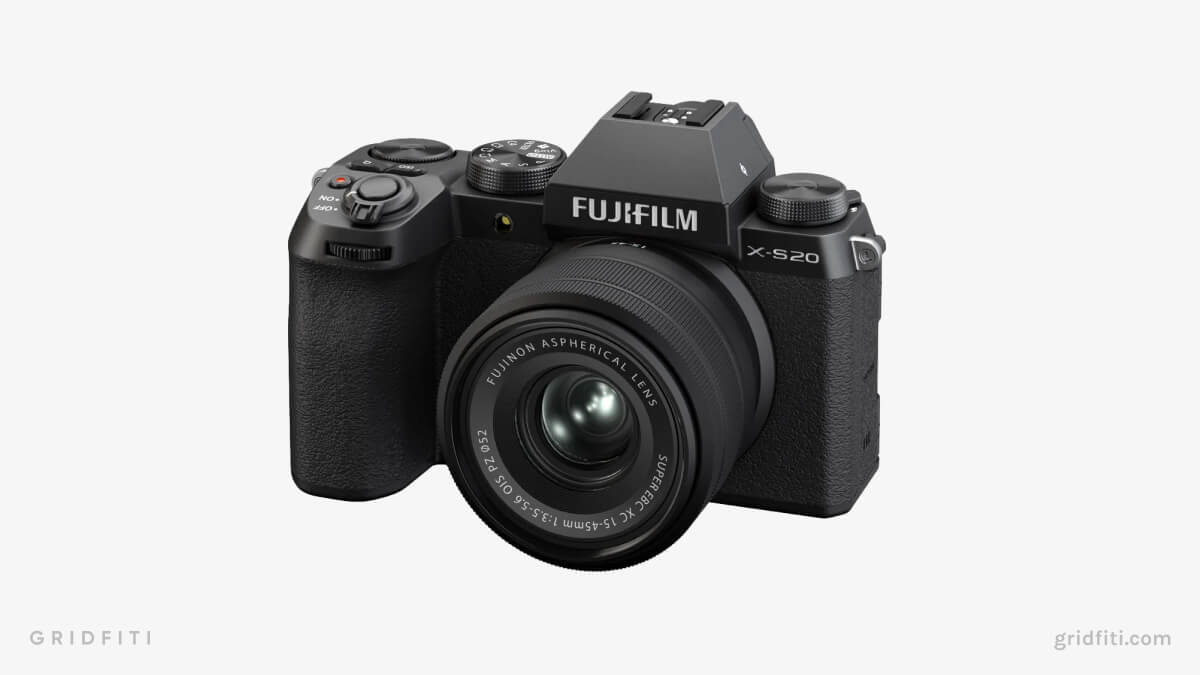
Fujifilm X-E4 + XF27mm F2.8R WR
If you’re trying to stay within the Fujifilm world, the older X-E4 model is a great alternative to the X100V and X100VI. This model is no longer in production, but available on the used market. It shares the same sleek, minimalist design as the X100V while still being user-friendly and including Fuji’s famous film simulation recipes. The X-E4’s main distinction is its interchangeable lenses. We recommend pairing it with the Fujifilm XF 27mm f/2.8 lens, which provides a focal range and sharpness similar to the X100V and X100VI’s fixed lenses, making it a worthy alternative to its more famous cousin.
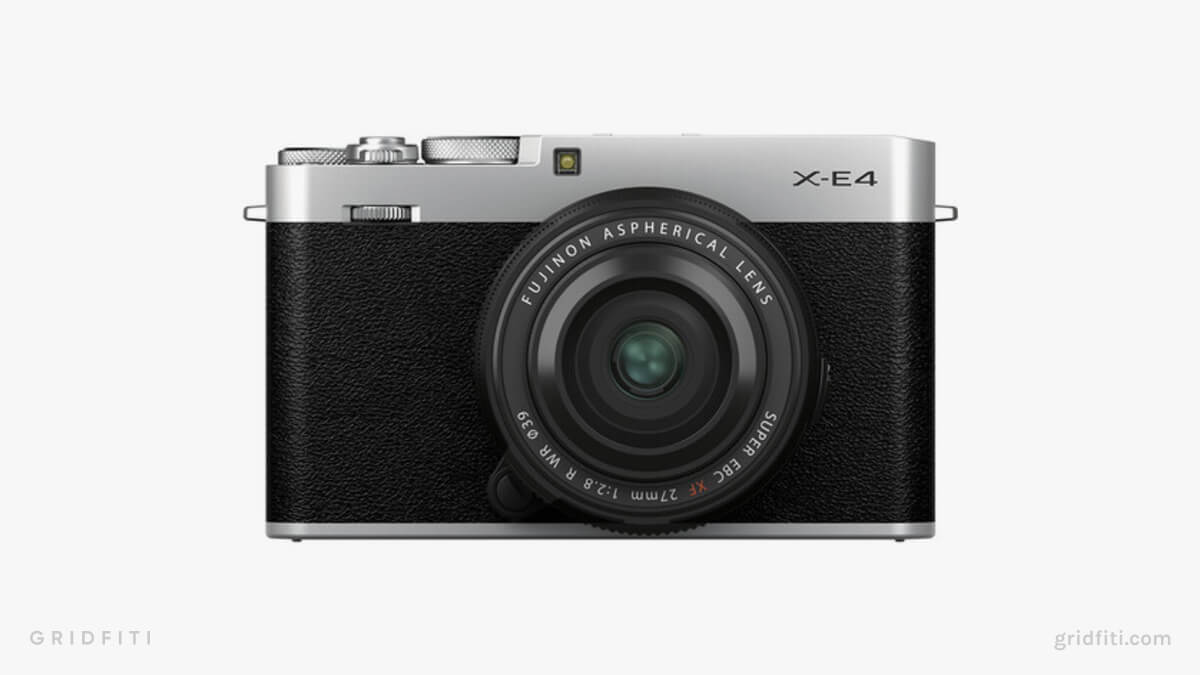
What do you think about these Fujifilm X100V and X100VI alternatives? Are there any other alternatives you think we’re missing? Let us know in the comments below!
Gridfiti is supported by its audience – when you buy something using the retail links in our posts, we may earn a small commission at no additional cost to you. Read more about our affiliate disclaimer.